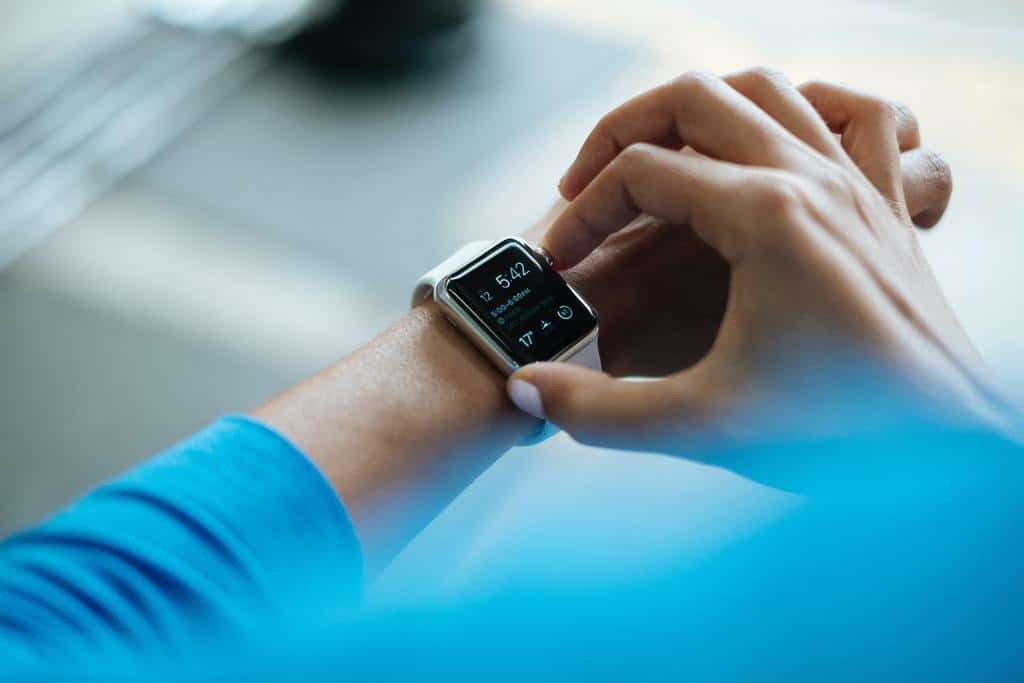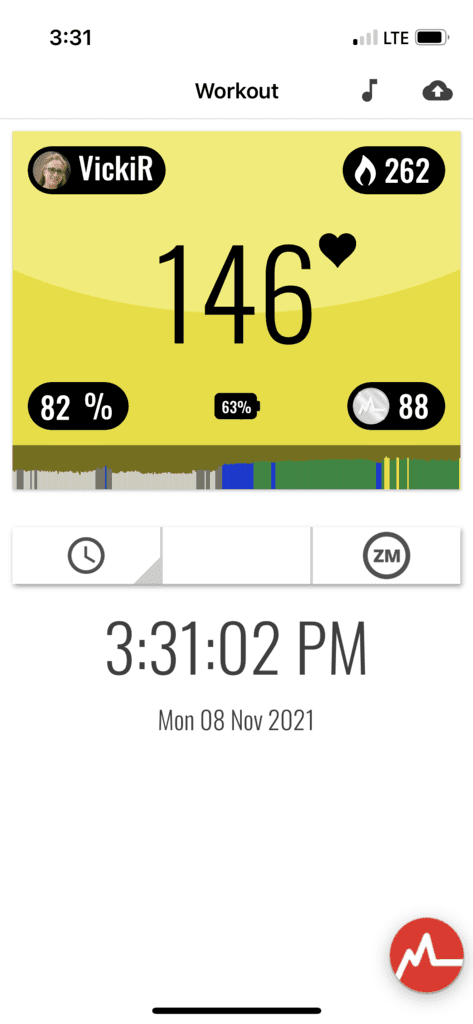 In my last blog, I talked about how you could get motivated to exercise by tracking your progress. One great way of doing that is by using a heart rate monitor while you work out. I’ve used one for years so I can say firsthand that it definitely helps with long-term motivation.
In my last blog, I talked about how you could get motivated to exercise by tracking your progress. One great way of doing that is by using a heart rate monitor while you work out. I’ve used one for years so I can say firsthand that it definitely helps with long-term motivation.
Besides time, getting motivated seems to be the biggest issue people have with starting and sticking to an exercise program. But motivation doesn’t happen on its own, you have to actively work at that too. That means using as many strategies as you can to help you out.
Related article: 10 Motivational tools to maintain weight loss and health.
I don’t know many people that work out regularly that don’t own a heart rate monitor. That’s because it gives them feedback about how they’re doing and improving over time. Anyone that’s serious about their health wants to see their progress and heart rate monitors do exactly that.
So this blog is a short review of some different heart rate monitors that you might want to consider for help with motivation to exercise. Hopefully, this will make things simpler for you!
Fitbit brand
I’m starting with the Fitbit brand because you hear so much about them and they’re fairly popular. I have a friend that’s had one for at least 4 years and she loves hers! I also had one for a couple of years and loved it but then it died. I’ve said it before, there’s no guarantee you won’t get a lemon!
I can’t even begin to list all the things that Fitbit can do to help keep you motivated to exercise and take better care of yourself! So I’m just going to list some of the highlights for you here.
-
- Tracks your heart rate 24/7 and records your resting heart rate (HR)
- Tells you what zone you’re working out in according to your Target HR
- Keeps track of your steps, distance and calories burned every day
- Waterproof so you can wear it while you swim
- Tracks both your stress level and sleep (time and quality)
- Gives you mindfulness tips and guided breathing help
- The rechargeable battery lasts 5-10 days depending on how you use it
This gives you an idea of how much information it can provide for reaching your health goals. But you still have to choose what type of Fitbit to buy. They all have slightly different features so you need to read about each one to decide what’s right for you. If you’re not used to this type of technology then I would suggest starting simple.
Styles
On the simpler and less expensive end, you can get the Fitbit Inspire 2. It even comes with a 1-year premium trial for extra features like recipes, video workouts, meditation apps, etc. Check out fitbit.com for more information on these features.
On the higher end of the spectrum is the Fitbit Charge 5 with more built-in features to use like GPS tracking and maps of your routes. That’s a great feature if you’re a hiker, biker or runner! It also comes with a 6-month free premium trial.
Pros and cons
Each Fitbit comes in different band colors, plus you can buy extra bands for different looks. That makes it fun! You can buy a Fitbit from Amazon, but they’re also sold in many local stores, as are the bands. You can also buy straight from Fitbit and have a 45-day money-back guarantee for a little more peace of mind.
Read the reviews before deciding what’s best for you, but keep in mind that bad reviews are more common. People don’t usually bother to write a review if they’re happy with a product so you don’t hear as many positives.
The nice thing about the Fitbit is that it’s a watch and you can wear it all the time. That means you don’t have to remember to put it on when you work out. It also means it tracks everything you do throughout the day, rather than just your workouts. Check out this Consumer Reports review on Fitbit’s accuracy.
The downside to wearing it all the time is that it might irritate your skin as it did to me. My skin would get red where the sensor touched it so I usually took it off overnight. But my skin still got red during the day. So it’s all personal choice and experience. I chose not to invest in another watch because I didn’t like that aspect of it.
Polar brand
Heart rate monitors also come in the form of chest straps that you may prefer instead. One popular long-time brand (since 1977) is Polar and their simplest and least expensive model is the Polar H9 heart rate sensor. Apparently, this brand is considered the “gold standard” in monitors. At least, according to Amazon!
All you do is hook the strap around your chest right at your sternum and it sends your workout data to your smartphone, sport watch, or other fitness equipment. It has Bluetooth, ANT+, and 5kHz (Gymlink) technology which makes it very versatile.
This heart rate monitor does NOT have a rechargeable battery but it does last at least a year (if you work out an hour every day) before having to replace it. It not only keeps track of your heart rate but also your calories burned, distance, pace, and the duration of your workouts. All things that are good to track for progress.
Apps and other features
The Polar Beat and Polar Flow apps give you other information to help you with your workouts. They can rate your current fitness level and give you tips on how to improve with specific workouts to follow. But you can also use third-party apps with this device. Check out this review from PCmag.com to learn some more about this particular heart rate monitor.
If you want more features, then Polar has more straps and watches ranging in price from about $80 up to $500. But again, my advice is to keep it simple if you’re just starting out. I’ve had a different brand of strap for many years and I’m mostly just interested in how hard and how long I’m working out. But that’s just me.
The downside to heart rate monitor straps is that you have to remember to put them on before you work out. This may seem like an easy thing to remember, but I can’t tell you how often I still forget before an outing like a bike ride or a hike! So if you’re a new exerciser, this could be a downside.
Related article: Hiking vs walking: how you can benefit from both.
Myzone brand
I want to talk about the Myzone brand now because this is what both my husband and I use. I was given one through the Exercise Science program at my school, so that was my first introduction to it. But I’ve really enjoyed using it for the past couple of years.
My husband bought his own after I got mine. And a nice benefit is that the gym he attends uses them so their workout stats can be shared as a group while they’re working out together.
The MZ-3 that we both have is a strap that goes around your chest over the sternum, just like the Polar H9 does. It has a couple of little sensors that lay flat against your ribs that need to be moistened in order to make a good connection. Other than that, you don’t have to do anything more with it.
When you get your Myzone, you’ll get instructions on how to sync it to your smartphone so it can communicate with it. This is very easy to do. I keep my phone on while I work out so I can view the readings it sends and see how hard I’m working. I also get monthly stats sent to my email for comparison.
Myzone also comes as an interchangeable wrist/armband or chest strap known as the MZ-Switch. With this one, you can choose how to wear it depending on the activity you’re doing or just personal preference. Know that this one is NOT a watch. Check out the different products they offer at Myzone.org.
How a heart rate monitor motivates
 Whether you use it in a group setting or on your own, it’s very motivating to see how high you get your heart rate during workouts. Remember, the higher your heart rate, the more calories burned. I keep my phone where I can see it while I’m working out so I can see my heart rate in real-time. That way I know if I need to work harder or not. I love that!
Whether you use it in a group setting or on your own, it’s very motivating to see how high you get your heart rate during workouts. Remember, the higher your heart rate, the more calories burned. I keep my phone where I can see it while I’m working out so I can see my heart rate in real-time. That way I know if I need to work harder or not. I love that!
Every time you exercise it also records the duration, intensity, and calories burned during your workout and gives you points for your effort. These are called MEP’s, or Myzone Effort Points. Those points add up each month. After so many months of achieving a specific number of points, you’ll get to the first level which I think is bronze.
After maintaining a certain number of MEP’s over so many months, you go to the next level. So you keep climbing to higher levels and this gives you the motivation to keep your exercise a habit. Because if you quit, you’ll have to start over. And nobody wants that! So basically it makes it a game for you.
Besides knowing your heart rate while you’re working out and climbing levels, motivation can also come from comparing your stats to other people. My husband and I like to do this! We compare how many MEP’s we got or how high our heart rates got during the same workouts, like a hike or bike ride. Competition always helps to motivate! And it makes it more fun.
My final thoughts
This is no comprehensive review by any means, but it does give you a basic idea of where you can start looking. The main difference between a heart rate monitor watch or strap is how they’re worn and how often they’re worn.
The watch generally stays on your wrist all the time and the strap or wristband is only used when you work out. So you have to decide how you want to wear it and if you want every move recorded or just your workouts. If you like to have a watch anyway then maybe a HR monitor that doubles as one is a better choice.
If your goal is to move more throughout the day and just be more active in general then I would recommend a watch. But if you just want to track your workouts to see how you’re doing then a strap or wristband can be a cheaper option. Seeing the numbers will help to motivate you to do more.
If you’re worried about figuring out how to work one then choose one that a friend or family member already owns. Otherwise, check out Youtube videos that give you step-by-step instructions on how to use them. If you join a gym that uses them then they’ll help you set them up and teach you the basics.
I’ve told my clients and friends for years that if they want more motivation to exercise then a heart rate monitor is a must! I believe that the more information you have about your workouts the more you’ll be able to progress. I also believe that understanding how you’re doing is key to improving and staying interested in exercise.






